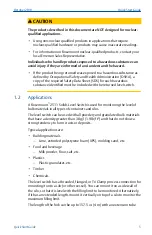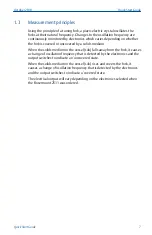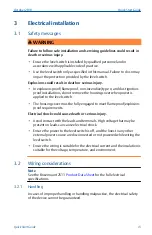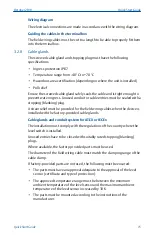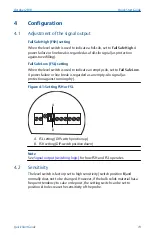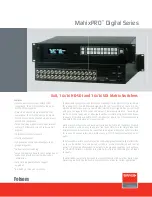
3.2.9
Conduit system
When a threaded conduit system is used instead of a cable gland, the
regulations of the country must be observed. The conduit must have a
½
-in.
NPT tapered thread to match a NPT threaded conduit entry of the level
switch and comply with ANSI B 1.20.1. Unused conduit entries must be
closed tightly with a metal stopping (blanking) plug.
Conduit system for FM
The regulations of the country must be observed. The flameproof seals and
stopping (blanking) plugs must have an adequate type approval and a
temperature range of at least -40 to 176 °F (–40 to +80 °C). In addition, they
must be suitable for the conditions and correctly installed. Where available,
the original provided parts of the manufacturer must be used.
3.2.10 Connection terminals
When preparing cable wires for connection to terminals, the wire insulation
must be stripped to show no more than 0.31 in. (8 mm) of the copper
strands. Always check that the power supply is disconnected or switched-off
to avoid coming into contact with dangerous live parts.
3.2.11 Relay and transistor protection
Provide protection for relay contacts and output transistors to protect the
device against inductive load surges.
3.2.12 Static charging
The Rosemount 2511 must be grounded to avoid a static electrical build-up.
This is particularly important for applications with pneumatic conveying and
non-metallic containers.
3.2.13 External equipotential bonding terminal
Connect with equipotential bonding of the plant.
Figure 3-1: External Equipotential Bonding Terminal
A
A. Equipotential bonding terminal on the Rosemount 2511
Quick Start Guide
October 2019
16
Quick Start Guide




